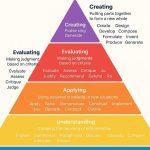
Nomadic Learning: Using Travel to Enhance Educational Experiences
Introduction
In today’s rapidly changing world, the traditional classroom model is evolving, giving rise to innovative ways of learning that go beyond the four walls of a school. One of the most exciting educational trends emerging today is nomadic learning, where students use travel to enhance their educational experiences. This approach allows learners to explore the world, engage with different cultures, and develop a global perspective that is increasingly essential in our interconnected society.
Nomadic learning isn’t just about visiting new places; it’s about immersing oneself in diverse environments, understanding different ways of life, and applying these experiences to educational growth. Imagine studying ancient civilizations while walking through the ruins of Athens or learning a new language while living with a host family in Spain. These experiences not only make education more engaging but also deeply personal and impactful.
What is Nomadic Learning?
Nomadic learning is an educational approach that incorporates travel as a core component of the learning process. Instead of being confined to a single location, learners move from place to place, acquiring knowledge and skills through direct experience with the world around them. This method contrasts with traditional education, which often relies on textbooks and classroom lectures.
Using Travel to Enhance Educational Experiences
Travel is a powerful tool in education because it takes abstract concepts and turns them into tangible experiences. For example, a student learning about the American Revolution could read about it in a textbook, but visiting historical sites like Independence Hall or walking the Freedom Trail in Boston makes history come alive. Similarly, studying marine biology becomes much more impactful when students can explore coral reefs in person, observing marine life in its natural habitat.

The Benefits of Nomadic Learning
Cultural Immersion and Global Awareness
One of the most significant benefits of nomadic learning is the opportunity for cultural immersion. By living in different countries, learners experience new customs, traditions, and languages firsthand. This exposure fosters a deep understanding and appreciation of diverse cultures, which is crucial in today’s globalized world. For instance, spending time in Japan can teach students about the importance of respect and discipline in Japanese culture, while living in Brazil might offer insights into the vibrant social life centered around music and dance.
Personal Growth and Independence
Nomadic learning also promotes personal growth by encouraging independence and self-reliance. Traveling often requires quick thinking, problem-solving, and adaptability—skills that are invaluable in both personal and professional life. When students navigate a new city, learn to communicate in a foreign language, or manage their finances while abroad, they develop confidence and a sense of autonomy that can’t be taught in a traditional classroom.
Practical Skills Development
Through nomadic learning, students acquire practical skills that are directly applicable to real-world situations. For example, they might learn budgeting by planning a trip on a limited budget, or they could enhance their communication skills by interacting with people from different cultural backgrounds. Additionally, travel can teach valuable lessons in time management, as students must often balance their educational goals with the logistics of traveling.
Enhanced Creativity and Innovation
Exposure to new environments and ideas often sparks creativity and innovation. When students engage with different cultures and ways of thinking, they are more likely to approach problems from unique angles and develop creative solutions. For instance, a student studying architecture might draw inspiration from the diverse architectural styles they encounter in different countries, leading to more innovative designs in their work.
How to Implement Nomadic Learning
Choosing Destinations Aligned with Educational Goals
When implementing nomadic learning, it’s essential to choose destinations that align with the educational objectives of the learners. For example, a student studying environmental science might benefit from visiting the Amazon rainforest, while someone interested in art history could find inspiration in the museums of Paris. The key is to select locations that offer relevant learning opportunities and experiences that enhance the curriculum.
Integrating Travel into Curriculum Design
Integrating travel into the curriculum requires careful planning and coordination. Educators can design assignments and projects that incorporate elements of the destinations students will visit. For example, a history lesson could involve researching a historical site before visiting it, and then writing a report on the experience afterward. This approach ensures that travel is not just a break from learning but an integral part of the educational process.
Utilizing Technology for Remote Learning
Technology plays a crucial role in supporting nomadic learning. Online platforms and tools enable students to stay connected with their teachers and peers, submit assignments, and access resources from anywhere in the world. For instance, a student traveling through Europe could attend virtual classes, participate in online discussions, and submit their work digitally. This flexibility allows learners to continue their education uninterrupted, no matter where they are.
Case Studies: Successful Nomadic Learning Programs
Several successful nomadic learning programs have been implemented worldwide, demonstrating the effectiveness of this approach. One example is the “Worldschooling” movement, where families travel the world together while educating their children on the road. These families often use a combination of homeschooling and local cultural experiences to provide a well-rounded education. Another example is the “Semester at Sea” program, which allows college students to travel to multiple countries while earning academic credits. These programs highlight the potential of nomadic learning to offer rich, immersive educational experiences.
Challenges of Nomadic Learning
Financial Considerations
One of the primary challenges of nomadic learning is the financial cost associated with travel. Plane tickets, accommodations, and other expenses can add up quickly, making it difficult for some families to afford this type of education. However, there are ways to mitigate these costs, such as choosing more affordable destinations, staying in budget accommodations, or applying for scholarships and grants designed for educational travel.
Logistical Issues and Planning
Planning and logistics are also significant challenges in nomadic learning. Coordinating travel schedules, ensuring access to necessary resources, and maintaining a consistent learning environment can be difficult when constantly on the move. It requires careful planning and flexibility to manage these challenges effectively. For instance, families might need to research visa requirements, find reliable internet connections, or arrange for medical care in foreign countries.
Balancing Travel with Academic Rigor
Another challenge is balancing the excitement of travel with the need for academic rigor. It can be tempting to prioritize sightseeing and exploration over studying, but it’s essential to maintain a balance that ensures educational goals are met. Educators and parents can help by setting clear expectations, creating structured schedules, and ensuring that students remain focused on their learning objectives.
Overcoming Cultural and Language Barriers
Cultural and language barriers can also pose challenges in nomadic learning. Students may struggle to adapt to new customs or communicate effectively in a foreign language. However, these challenges can also be opportunities for growth. Learning to navigate different cultural norms and communicate across language barriers are valuable skills that can enhance a student’s global perspective.
Nomadic Learning for Different Age Groups
Nomadic Learning for Young Children
For young children, nomadic learning can be an incredibly enriching experience, but it requires a different approach compared to older students. The focus should be on creating a stable and supportive environment while incorporating learning activities that are engaging and age-appropriate. For example, a family traveling with young children might incorporate educational activities like visiting local museums, participating in cultural festivals, or exploring nature trails. The key is to make learning fun and interactive, while also providing the comfort and routine that young children need.
Approaches for High School Students
High school students can benefit significantly from nomadic learning as it offers them a chance to gain independence and prepare for adulthood. At this stage, the curriculum can be more rigorous, with an emphasis on subjects that align with the student’s future academic or career goals. For example, a student interested in marine biology might participate in a research project in the Galápagos Islands, while another focused on history could study ancient civilizations in Egypt. High school students can also take on more responsibility for their education, such as planning their itineraries or managing their budgets.
College and University-Level Nomadic Learning
At the college and university level, nomadic learning can be highly specialized, with students choosing destinations that directly relate to their fields of study. For example, a student studying international business might spend a semester in China to learn about global trade practices, while an anthropology major could conduct fieldwork in remote villages in Africa. Nomadic learning at this level often involves internships, research projects, or other hands-on experiences that enhance academic knowledge and provide valuable career skills.
Adult Learners and Lifelong Learning
Nomadic learning is not limited to children and young adults; it can also be an enriching experience for adult learners and lifelong learners. Many adults choose to travel as part of their continuing education, whether it’s taking a cooking class in Italy, learning a new language in Mexico, or studying art in France. For adults, nomadic learning offers a chance to pursue personal interests, gain new skills, and experience the world in a meaningful way. It also provides an opportunity to connect with people from different cultures and build a global network of friends and colleagues.
The Future of Nomadic Learning
The Role of Technology in Expanding Nomadic Learning
Technology will continue to play a crucial role in the future of nomadic learning. With advances in online education, virtual reality, and communication tools, it’s becoming easier than ever to learn from anywhere in the world. For example, virtual reality can allow students to explore historical sites or natural wonders without leaving their homes, while online platforms enable them to connect with teachers and peers across the globe. As technology continues to evolve, the possibilities for nomadic learning are virtually limitless.
Trends in Educational Travel
Educational travel is expected to grow in popularity as more people recognize the value of learning through experience. Programs that combine travel with education, such as study abroad opportunities, internships, and service learning projects, are likely to become more widespread. Additionally, there may be a rise in niche educational travel programs that cater to specific interests, such as language immersion trips, wildlife conservation expeditions, or culinary tours.
Predictions for the Growth of Nomadic Learning
As the world becomes more interconnected, the demand for global education is expected to increase
, driving the growth of nomadic learning. Schools and universities may start to offer more flexible programs that incorporate travel, and new educational models may emerge that prioritize experiential learning over traditional classroom instruction. Furthermore, as more people embrace remote work, the lines between education, travel, and work are likely to blur, creating new opportunities for nomadic learning.
Practical Tips for Nomadic Learners
Budgeting and Financial Planning
Budgeting is one of the most critical aspects of successful nomadic learning. It’s essential to plan your finances carefully to ensure that you can afford your travels without compromising your education. Start by setting a realistic budget that includes all potential expenses, such as transportation, accommodation, food, and activities. Look for ways to save money, such as booking flights in advance, staying in budget accommodations, or cooking your meals instead of eating out. Additionally, consider applying for scholarships or grants that can help offset the cost of educational travel.
Staying Safe While Traveling
Safety should always be a top priority when traveling, especially when you’re far from home. Before you leave, research your destination to understand any potential risks and learn about the local laws and customs. Make sure you have travel insurance that covers medical emergencies, theft, and other unexpected events. Keep copies of important documents, such as your passport and travel itinerary, and share them with a trusted friend or family member. While traveling, stay aware of your surroundings, avoid risky situations, and trust your instincts.
Essential Tools and Resources
Having the right tools and resources can make your nomadic learning experience more enjoyable and efficient. Invest in a reliable laptop and smartphone, as these will be essential for staying connected with your studies and managing your travel plans. Use apps like Google Maps, Duolingo, and TripIt to help with navigation, language learning, and itinerary management. Consider joining online communities or forums where you can connect with other nomadic learners and share tips and advice.
Building a Support Network
Building a support network is crucial when you’re traveling and learning on the go. Stay in touch with your family, friends, and teachers, and let them know where you are and how you’re doing. Connect with other travelers and nomadic learners through social media, online groups, or local meetups. Having a support network can provide you with a sense of security, offer valuable advice, and help you overcome any challenges you may face during your travels.
Conclusion
Nomadic learning offers a unique and enriching educational experience that goes beyond the traditional classroom. By using travel to enhance educational experiences, students can gain a global perspective, develop essential life skills, and create lasting memories. While there are challenges associated with nomadic learning, the benefits far outweigh the difficulties. Whether you’re a young student, a college graduate, or a lifelong learner, nomadic learning can open up a world of opportunities for personal and educational growth. So pack your bags, set out on an adventure, and let the world be your classroom.
FAQs
What is the best age to start nomadic learning?
Nomadic learning can be beneficial at any age, but the best time to start depends on the individual’s needs and goals. Young children can benefit from early exposure to different cultures, but it’s essential to create a stable and supportive environment. High school and college students often gain the most from nomadic learning, as they are at a stage where they can appreciate and learn from new experiences while developing independence and responsibility. Adult learners can also find value in nomadic learning as a way to pursue personal interests or continue their education in a more flexible and enriching way.
How can parents support their children in nomadic learning?
Parents can support their children in nomadic learning by creating a structured and stable environment, even while on the move. This might involve setting up a consistent daily routine, ensuring access to educational resources, and providing emotional support. It’s also important for parents to engage with their children’s learning experiences by participating in educational activities, discussing what they’ve learned, and encouraging curiosity and exploration. Additionally, parents can help by planning trips that align with their children’s educational goals and interests.
What are some cost-effective ways to implement nomadic learning?
There are several cost-effective ways to implement nomadic learning. Start by choosing affordable destinations, such as countries with a lower cost of living or regions that offer budget-friendly travel options. Consider staying in hostels, guesthouses, or short-term rentals instead of hotels, and look for opportunities to save money on food by cooking your meals. You can also reduce costs by traveling during the off-season, using public transportation, and taking advantage of free or low-cost educational activities, such as museum visits, cultural festivals, or nature hikes.
How does nomadic learning compare to traditional classroom education?
Nomadic learning offers a more experiential and hands-on approach to education compared to traditional classroom education. While traditional education often relies on textbooks and lectures, nomadic learning immerses students in real-world experiences that bring learning to life. This approach allows students to apply their knowledge in practical settings, develop critical thinking skills, and gain a deeper understanding of different cultures and global issues. However, nomadic learning also requires more planning, flexibility, and self-discipline, as students must balance travel with academic responsibilities.
Can nomadic learning be combined with formal education systems?
Yes, nomadic learning can be combined with formal education systems, and many students successfully integrate both approaches. For example, students can participate in study abroad programs, internships, or exchange programs that allow them to travel while earning academic credits. Technology also plays a key role in facilitating this combination, as online courses, virtual classrooms, and digital resources enable students to continue their education remotely while traveling. Schools and universities are increasingly recognizing the value of experiential learning and are offering more flexible programs that accommodate nomadic learning.









